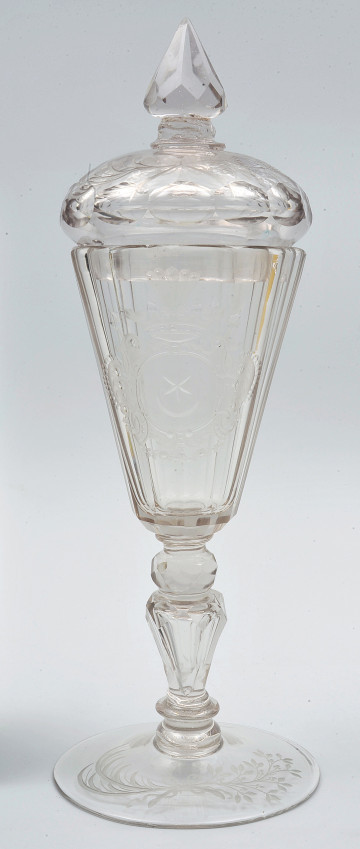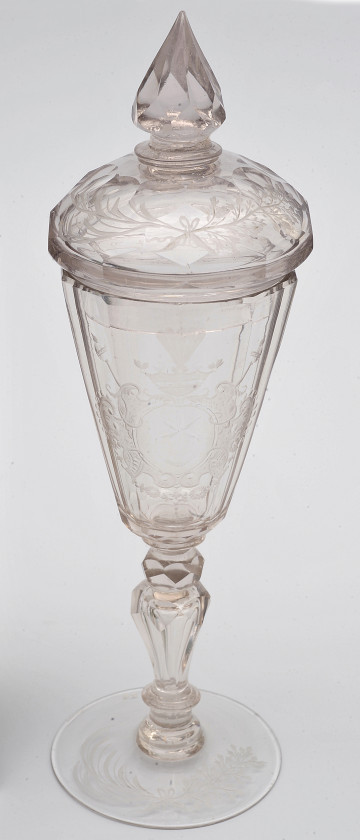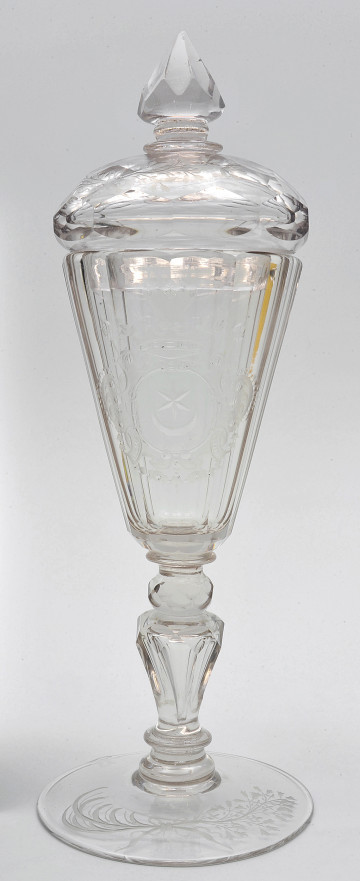
Goblet with a cover
Museum of King Jan III's Palace at Wilanów
Part of the collection: Artistic glass
The goblet was manufactured at Huta Kryształowa (Crystal Factory), the first magnate-owned facility producing luxury glass and established by hetman Adam Mikołaj Sieniawski (1666–1726) in 1717. As from the early days of operation, the emphasis was put on top-quality goods made of crystal glass, so called because of its clarity which makes it resemble rock crystal.
The goblet has a low, bevelled stem and a very tall, slim bowl. The bowl displays delicate matte engraving depicting a sinuous vine with grapes and birds sitting on its branches. The foot of the goblet is decorated with a fine-leaf wreath.
New techniques and materials, i.e. crystal glass, polishing and engraving, which had started to be used in many factories in the mid-17th century completed changed the glass fashion trends in Europe. Venice and its delicate, tinted and decorated glassware were replaced on banquet tables by heavy and massive vessels, with their transparency often accentuated by bevelling and engraved decoration. The vessel from the Wilanów collection is an example of this style.
This tall and slim design of the goblet became popular in Saxony in the first half of the 18th century. Due to their shape, such goblets are called flutes or champagne glasses for reasons related to their function at the table. They could be found already in the 16th century in Venice and they were used to serve wine, especially sparkling wine. Some of these vessels had a cover.
Dimensions
entire object: height: 34,3 cm, width: 12,3 cm
Technique
carving,grinding
Owner
Museum of King Jan III's Palace at Wilanów
Identification number
Location / status

Museum of King Jan III's Palace at Wilanów

Museum of King Jan III's Palace at Wilanów

Museum of King Jan III's Palace at Wilanów
DISCOVER this TOPIC
Castle Museum in Łańcut
DISCOVER this PATH
Educational path